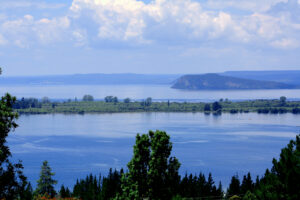Approximately 26,500 years ago, a monumental volcanic event known as the Oruanui eruption unfolded within the Taupo Volcanic Zone on New Zealand’s North Island. This eruption stands out as the most substantial volcanic eruptions witnessed worldwide in the past 70,000 years, characterized by its explosive nature, copious ash and pumice production, and the creation of an expansive caldera. Its magnitude earned it a remarkable VEI-8 classification on the Volcanic Explosivity Index, signifying a “super” eruption.
The Oruanui eruption unleashed a staggering estimated volume of 1,170 cubic kilometers (280 cubic miles) of ash, rock, and pumice into the atmosphere. Its cataclysmic consequences were far-reaching, as the resulting ash and pumice blanketed extensive regions of the North Island and even reached parts of the South Island. The caldera that formed due to this eruption now comprises the renowned Lake Taupo, an iconic geological feature of the region.
Notably, the environmental and climatic impacts triggered by the Oruanui eruption were substantial. The eruption left behind a significant ash deposit, distributed throughout New Zealand and even extending to certain areas of Australia and Antarctica. This extensive dispersal of ash created a lasting mark on the local landscape and affected regional ecosystems. The eruption’s profound influence on the climate cannot be understated, as the massive injection of volcanic materials into the atmosphere likely led to noticeable global climatic perturbations during that era.




